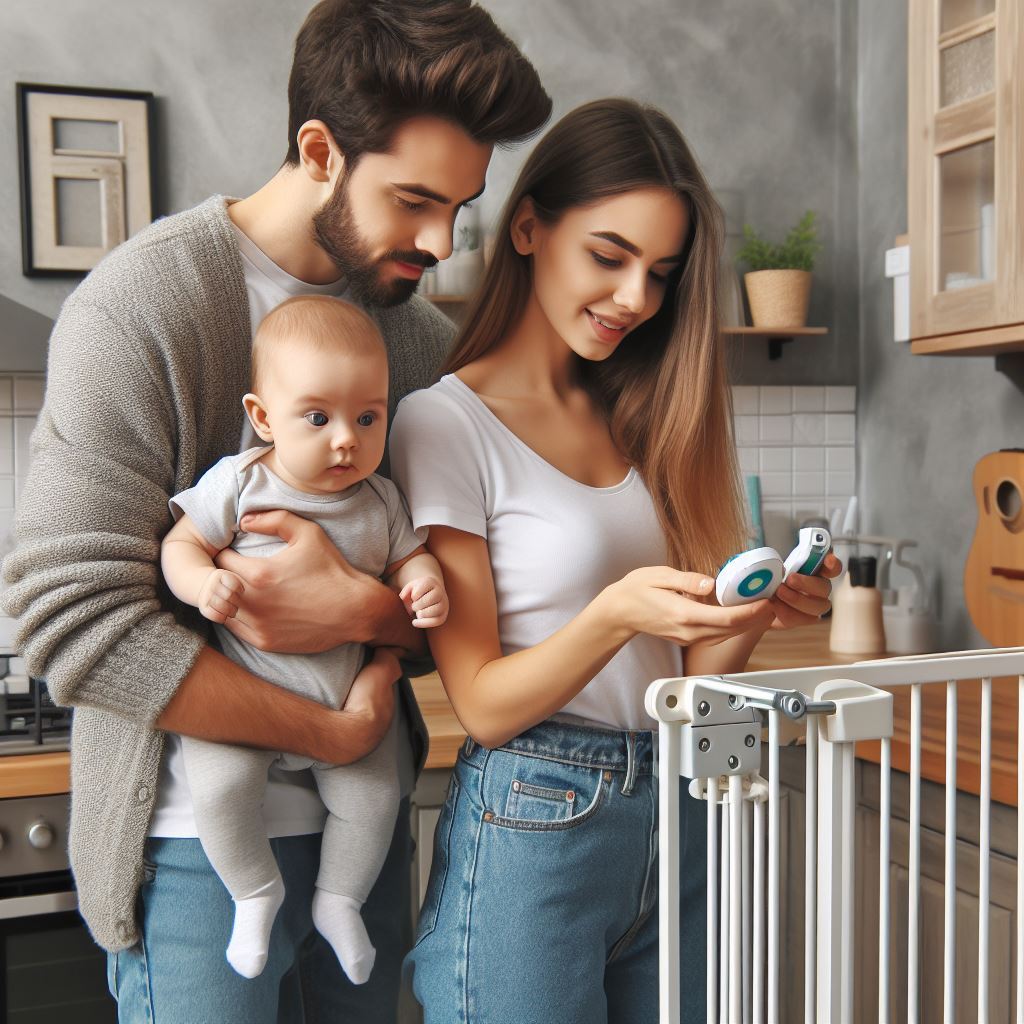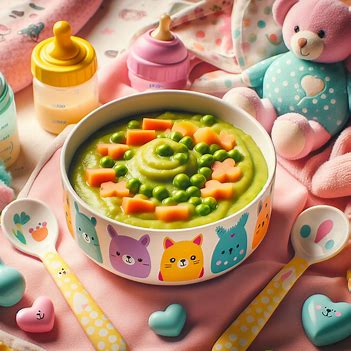Are baby gates worth it?
Baby gates are highly recommended for households with young children or pets, especially if potential hazards like stairs or rooms need to be restricted. They offer a significant safety benefit by preventing falls, controlling access to dangerous areas, and providing peace of mind to caregivers.
The worth of a baby gate largely depends on your specific needs and living situation. If you have areas that pose a risk to a child’s safety, such as stairs, kitchens, or rooms with fragile items, investing in a baby gate is usually considered a worthwhile safety measure. Additionally, they can be beneficial for pet owners to limit their pets’ access to certain areas.
The decision to purchase a baby gate is influenced by factors like the layout of your home, the age of your child, and whether you have pets. However, for many parents and caregivers, their safety and security outweigh the cost or inconvenience, making baby gates a valuable investment in childproofing and maintaining a safe environment.
Do you need baby gates?
The necessity of baby gates depends on your specific living situation and the potential risks present in your home. If your home has areas that could pose a risk to a child’s safety, such as stairs, rooms with hazards, or areas you want to keep pets out of, baby gates can be incredibly beneficial.
For households with young children or pets, baby gates are a practical way to prevent accidents, control access to certain areas, and offer peace of mind to caregivers. They serve as a barrier, reducing the risk of falls or accidents in spaces that might be dangerous for curious little ones.
However, whether you “really need” baby gates depends on your circumstances and how you’ve childproofed your home. If you don’t have areas that pose a risk or if you’ve implemented alternative safety measures, like constant supervision or rearranging spaces to eliminate hazards, you might not find baby gates necessary. Ultimately, the decision to use baby gates is about assessing the potential risks in your home and taking appropriate measures to ensure safety.
Is there a baby gate that doesn’t require screws?
Yes, there are baby gates designed specifically to be installed without screws or drilling into walls or doorframes. These types of gates are typically known as pressure-mounted gates. They use tension to stay in place, usually by pressing against the walls or doorframe.
Pressure-mounted gates are easier to install and remove compared to hardware-mounted gates, making them a popular choice for temporary use or in situations where drilling into walls isn’t feasible or desired. However, it’s important to note that pressure-mounted gates might not be as secure as hardware-mounted ones, especially for top-of-stairs use. They work well in doorways or between rooms but might not be the best choice for the top of stairs where extra security is crucial.
Always follow the manufacturer’s instructions carefully when installing any type of baby gate to ensure it is properly secured and appropriate for the intended use.
Is there a difference between a baby gate and a pet gate?
The terms “baby gate” and “pet gate” are often used interchangeably, but there are some differences in their design and functionality, primarily tailored to the needs of either a child or a pet.
Baby gates are specifically designed with the safety of young children in mind. They typically have features such as smooth surfaces, sturdy construction, and lock mechanisms that are child-resistant but easy for adults to operate. These gates are often taller to prevent climbing and are usually constructed to withstand the weight and force of a child.
Pet gates, on the other hand, are primarily designed to contain pets rather than ensure child safety. While some pet gates may share similarities in design with baby gates, they might have features that cater specifically to pets. These could include smaller gaps between bars to prevent pets from squeezing through, materials that can withstand chewing or scratching, and easier access for pet owners to pass through without having to open the gate fully.
However, many gates are marketed as suitable for both pets and children. These versatile gates often have adjustable widths, making them adaptable to various doorways or spaces. Still, it’s essential to consider the specific needs of your household—whether it’s primarily for child safety, pet containment, or both—when choosing a gate.
Are retractable baby gates any good?
Retractable baby gates can be a good option for certain situations due to their convenience and flexibility. They offer some distinct advantages:
- Space-Saving: Retractable gates roll up when not in use, taking up minimal space compared to traditional gates that swing open. This feature is particularly useful in narrower hallways or high-traffic areas where a swinging gate might be cumbersome.
- Versatility: They are often adjustable in width, making them suitable for various openings. Their flexibility allows installation in different spaces within the home.
- Aesthetics: Retractable gates often have a sleeker, less obtrusive design compared to traditional gates, which might be more visually appealing in certain settings.
However, there are some considerations:
- Durability: Some retractable gates might not be as sturdy or robust as hardware-mounted gates. This could potentially affect their ability to withstand heavy use or the force exerted by a child leaning or pushing against them.
- Installation: While generally easier to install than hardware-mounted gates, some retractable gates might require careful attention to proper installation for optimal function and safety.
- Price: Retractable gates can be more expensive than traditional gates due to their unique design and features.
Before purchasing a retractable baby gate, it’s essential to research specific brands/models, read reviews, and ensure the gate meets safety standards. As with any baby gate, ensuring proper installation and following manufacturer guidelines is crucial for its effectiveness in providing safety and security for children.
Are there any potential dangers for children with baby gates?
While baby gates are designed to enhance child safety, there are some potential risks associated with their use if not properly installed or if certain precautions aren’t taken:
- Falls: Improperly installed gates or gates that aren’t securely locked can lead to falls if a child manages to dislodge or climb over them. This risk is higher with pressure-mounted gates, especially at the top of stairs, as they might not provide the same level of security as hardware-mounted gates.
- Fingers and Toes: Some gates have mechanisms that could pinch fingers or toes if operated carelessly. Children might also try to play with the gates, risking injury.
- Gate Failure: Over time, gates can wear out or become less secure, potentially leading to a gate failure. Regular maintenance and checks for wear and tear are essential.
- Using Inappropriate Gates: Using the wrong type of gate for specific areas, like using a pressure-mounted gate at the top of stairs, can pose risks. Hardware-mounted gates are generally recommended for the top of stairs due to their increased security.
- Tripping Hazard: Gates that swing open might become a tripping hazard if left open or not properly secured when closed.
To mitigate these risks, it’s crucial to follow installation instructions carefully, regularly inspect the gates for any signs of wear or damage, choose the appropriate gate for each area of your home, and always supervise young children around the gates. Additionally, educating older children about the gates and their purpose can help prevent accidents.
At what age do you no longer need baby gates?
The age at which you no longer need baby gates varies depending on your child’s development, their understanding of safety boundaries, and the layout of your home. Generally, most children start developing better safety awareness and coordination skills around the age of 2 to 2.5 years old. By this age, many children can understand and follow simple safety instructions.
However, the decision to remove baby gates ultimately depends on your child’s behaviour, comfort level, and the specific layout of your home. Some factors to consider include:
- Developmental Milestones: Consider your child’s ability to understand and follow safety instructions, as well as their physical capabilities. If they’re adept at navigating stairs safely and have learned not to enter restricted areas, you might consider removing the gates.
- Home Layout: Evaluate the potential risks in your home. If there are still areas that pose a danger to your child, such as steep stairs or hazardous rooms, you might want to keep the gates in place longer.
- Consistency: If you have younger children or pets in the house, you might opt to keep the gates up for a longer period to maintain a consistent safe environment.
Ultimately, there’s no definitive age at which all children no longer need baby gates. It’s more about observing your child’s behaviour, ensuring their safety, and making decisions based on their development and the safety needs of your home.




